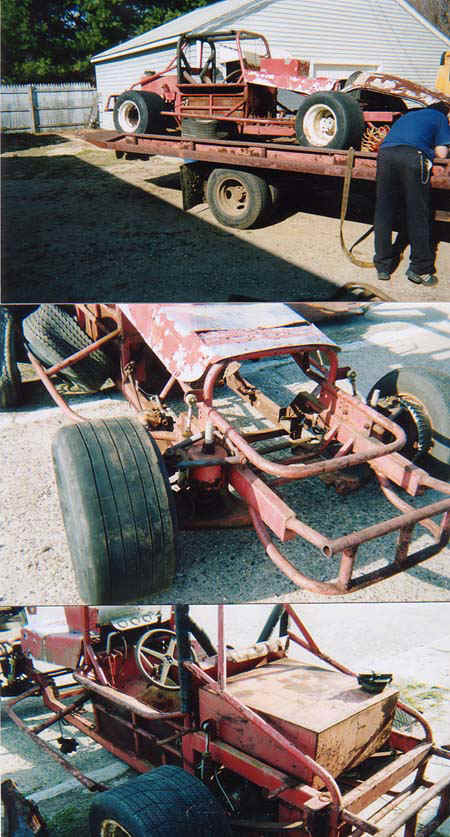
"John
Doe" Modified:
Vault Mystery For You to Solve....

Help a Fellow Enthusiast Find Out a Little History on a Car From the Past...
Here's All That's Known:Photo ID# c06.01.06_DOE_SPI_UNK_0070J_1 Car #: Not sure Driver (s) : Not sure Location: Possibly Cookstown, or New Egypt, NJ Date Raced: Early 70's? Photographer: Phil Spino Photo provided by: Mark Yaple Comments: Here's a really unique modified that we're hoping that you guys might recognize and provide a few details for the friends of the Vault who will be restoring it. The car is set up with an independent front suspension and looks like it was set up to run a Chevy big block. The current owner is thinking it is a Central Jersey car, but nobody is really sure.
Visitor's Comments If you recognize the car and have any info to add regarding the history of this car, please email us here at the Vault: Click Here or email us at 3wide@optonline.net (include the Photo ID# above)
Date: Visitor's Name: Comment:
06/01/06 Phil Horner From what I remember this looks like a car that was built by Gunny Holden from New Egypt in the early to mid 70's.
The car was raced at East Windsor. I know Dickie Lewis drove it and I believe one of the Taylor twins, Leroy or Larry, took a stab at it, but the car never really amounted to much. It had a lot of handling problems. The geometry in the front suspension just could never allow the steering to respond correctly or transfer weight where it was really needed.
I believe Gunny used the # 9 on the car. As you know Dickie's number was 9X. By the way, when the car was built it was set up for a Big Block Ford with stacks on it.
If I think of anything else I will let you know. Phil02.24.12 Terry Fick I have no idea who built this car but I have a thought about the ill handling the car suffered. The front suspension is interesting in that it is independent, something odd for a modified or sprint. Will it work? Sure, the Bullock cars did well with Chamberlain with a semi-independent front end. But the key is a sway bar, something I do not see in this photo.
In a non-wing car, like a modified, the right side of the car is loaded during corner entry and exit. This loading will push the outside frame down toward the track and pick up the inside of the car. At the same time, the roll center is
going up in the air and the center of gravity is moving to the outside of the car; all this due to the weight shift. When all these elements come together centrifugal force overcomes the bite of the tires and you get a push, or under-steer.
A sway bar works by transferring some of the upward axle motion (chassis pushing down) to the inside of the car by not allowing as much lift on the inside (using the frame mounts as levers) thus allowing gravity to help push down the left side. This car had no way to do that so what I believe was happening was on entry the right side was loading, making the car push, forcing the driver to back off or visit Elvis at the wall. When he backed off the spring would throw the weight (depending on shock valving, usually "an easy" up on the RF) to the inside, instant bite causing a loose condition, the driver hit the gas to drive the rear tires back under the car, throwing the weight on the right rear, and off he went. I have driven cars like this, there is a certain pucker factor involved.
A solid axle on the front serves as a type of sway bar eliminating some of that lift. The King cars had solid axles and bar suspension up front but also sway control which is probably why they dominated as they did. Handling is a complex issue, as Red Stauffer's crew chief told me, "a thinking man's game." This is why I think this car might have been more thrill ride than a thrilling ride.